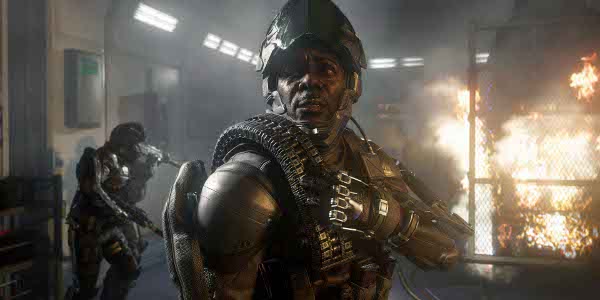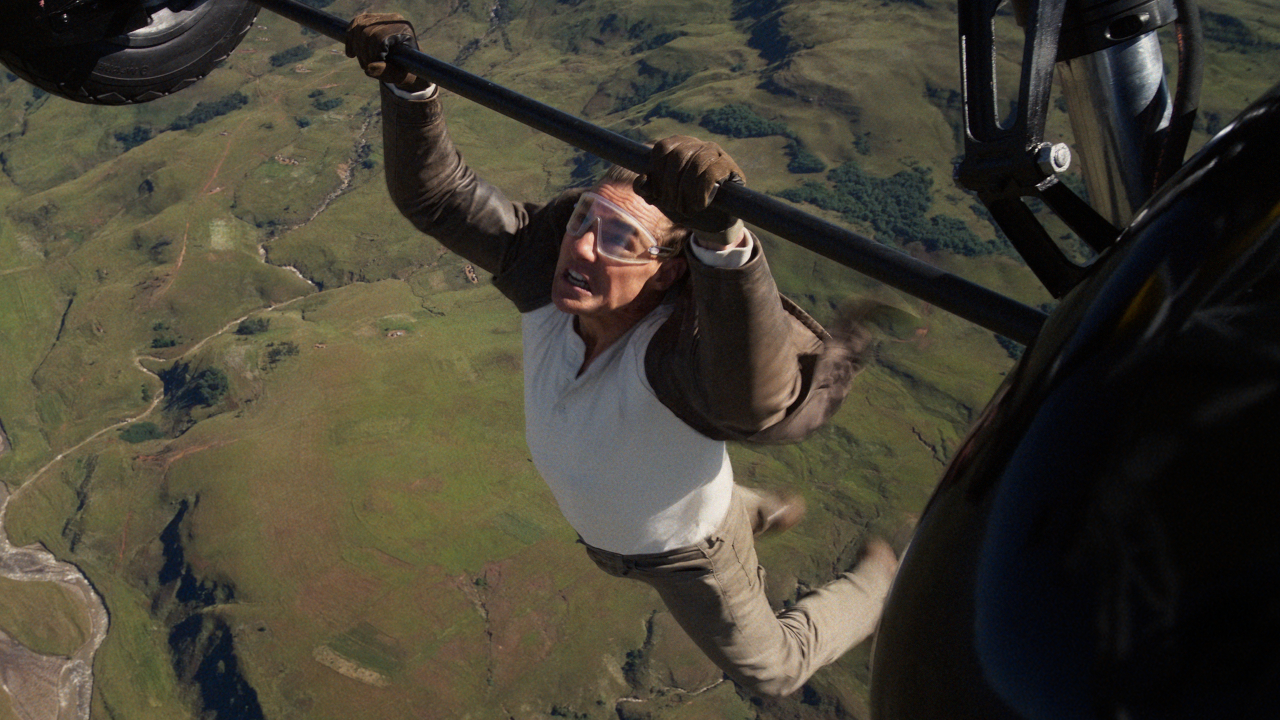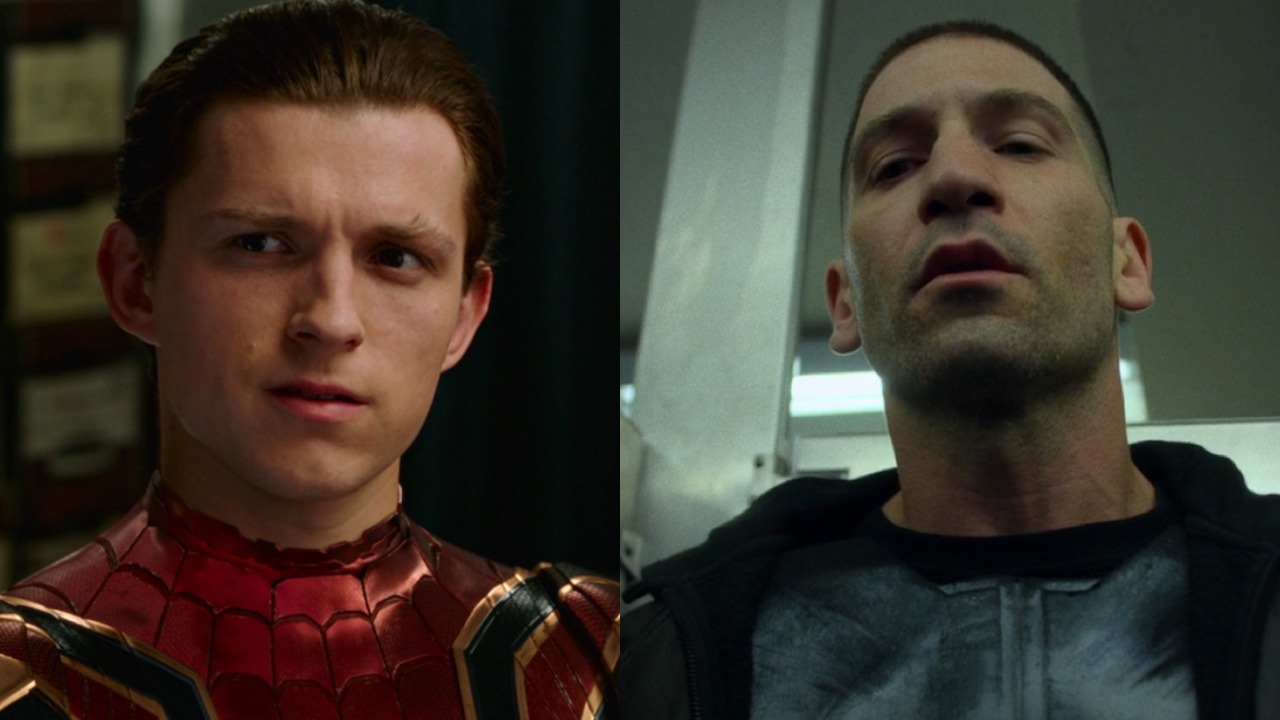
As far as sales pitches go, "It has Kevin Spacey and laser guns!" is a pretty good one. Who wouldn't be at least mildly curious to play a game with those two features, even if it's a sequel in a series that's been running on fumes for years? Sledgehammer Games gets just enough mileage out of both to elevate Call of Duty: Advanced Warfare above the past few games.
Last year's Call of Duty: Ghosts had a nearly incomprehensible story. Advanced Warfare's writing isn't any better but at least the plot is front and center rather than confined to loading screens. Hiring Kevin Spacey and paying him god-knows-how-much forced Sledgehammer to actually use him. His character, the slimy CEO of a private military company, appears just enough in the story to give players a tangible enemy.
The absence of any strong characters to play off him (your character is a mute within the game) makes Spacey's scenes feel more like monologues. Fortunately, Spacey is a strong enough presence to carry the load. The guy chews scenery like a fucking Langolier. The motion-capturing removes the distance between him and his video game avatar, making the performance all the more life-like and effective.
Advanced Warfare's premise - private military companies becoming more powerful than nations by the mid-21st century is thought-provoking speculation, too. I do wish that a strong lead actor and an interesting story idea led to a story that felt markedly different than the usual Call of Duty fare, though. Instead, it ends up hitting many of the same narrative notes as games that came before it: well-meaning soldiers betrayed by those in power, comrades dying bravely in battle, and megalomaniacs trying to blow up the world with a doomsday weapon. The campaign's more memorable than the past few games but still feels too familiar.
The advanced technology of the futuristic setting helps the game at least play different. Players are outfitted with exoskeletons that allow them to do superhuman things, like leap 20 feet in the air, rip a car door off its hinges and use it as a shield, or slow down time. The campaign is still a tightly-scripted corridor shooter but the various aces shoved up player's sleeve give them different options for taking out these hordes of enemies. I do wish players could control their exoskeleton's loadout for each mission to let them determine their playstyle, though.
The other futuristic gadgets have less of an impact on the campaign. Laser guns - sorry, "directed energy weapons" - look neat but don't have the range or stopping power to be considered over conventional weapons. Smart grenades, which home in on enemies, just make players lazier in aiming their throws. The grappling hook is a fun way to zip across the map but is limited to only a few situations. Even with these gadgets and the exoskeletons, this is a game that feels 90% like Call of Duty: Ghosts or any other recent game in the series.
Exoskeletons make a more meaningful change to the competitive multiplayer. Holding chokepoints becomes a lot harder when enemies can leap down on you from the roof above, sneak up on you with a cloak, or bullrush you with a shield. Some maps unleash these new abilities' potential more, but across multiplayer the message is clear: you're not safe. If an enemy wants to take your position, they've got plenty of tools to do it. If you're a Call of Duty purist, you can use the Classic playlist for Team Deathmatch, Domination, Kill Confirmed and Search and Destroy matches with exoskeletons disabled.
CINEMABLEND NEWSLETTER
Your Daily Blend of Entertainment News
Even without the exoskeletons, Advanced Warfare would have one of the better multiplayer games in the series. The common insult leveled at Advanced Warfare is that it's a Titanfall rip-off - which is inaccurate for many reasons, including the fact that AW has a lot more content. The game shipped 12 modes, over twice what Titanfall had at launch. Enhancing the standard collection of modes from past games are Uplink, a basketball-like mode that asks players to throw or slamdunk a drone in the enemy team's airborne goal, and Momentum, which challenges a team to capture several flags in a short period of time.
The flexible Pick 10 system from Black Op 2 returns in a modified form here. You can choose weapons, attachments, perks, exo abilities, grenades and drones for your loadout. Wildcards, meanwhile, let you change the amount of items or perks you can carry. The biggest differences between Pick 10 and the new Pick 13 are the new scorestreak modifiers. You can modify scorestreaks to be more effective but this increases the amount of points you need to earn to acquire them. For example, a turret upgraded to fire rockets instead of just bullets takes 100 more points. This system gives players a lot of options right off the bat, and this long list of possibilities only increases as they earn ranks.
Call of Duty: Advanced Warfare also includes a co-op mode called Exo-Survival that feels like a bit of an afterthought. Up to four players will fight off waves of enemies and spend their hard-won points on upgrades to their stats and equipment. It's a bog standard Horde mode that isn't unique enough to keep me playing. However, I'm sure that some gamers will appreciate having a two-player split-screen mode option.
Advanced Warfare, in spite of its Oscar-winning star and new time period, is still largely the Call of Duty experience we've come to expect. However, it's much more inspired and unique than the past few years' games. It experiments less than I'd hope but its experiments hit the mark. The result is that Advanced Warfare is an upward bump on a series many assumed was in permanent decline.
Platforms: PS4 (reviewed), Xbox One, PS3, Xbox 360, PC
Developer: Sledgehammer Games
Publisher: Activision
ESRB: Mature
Rating:

Staff Writer at CinemaBlend.










